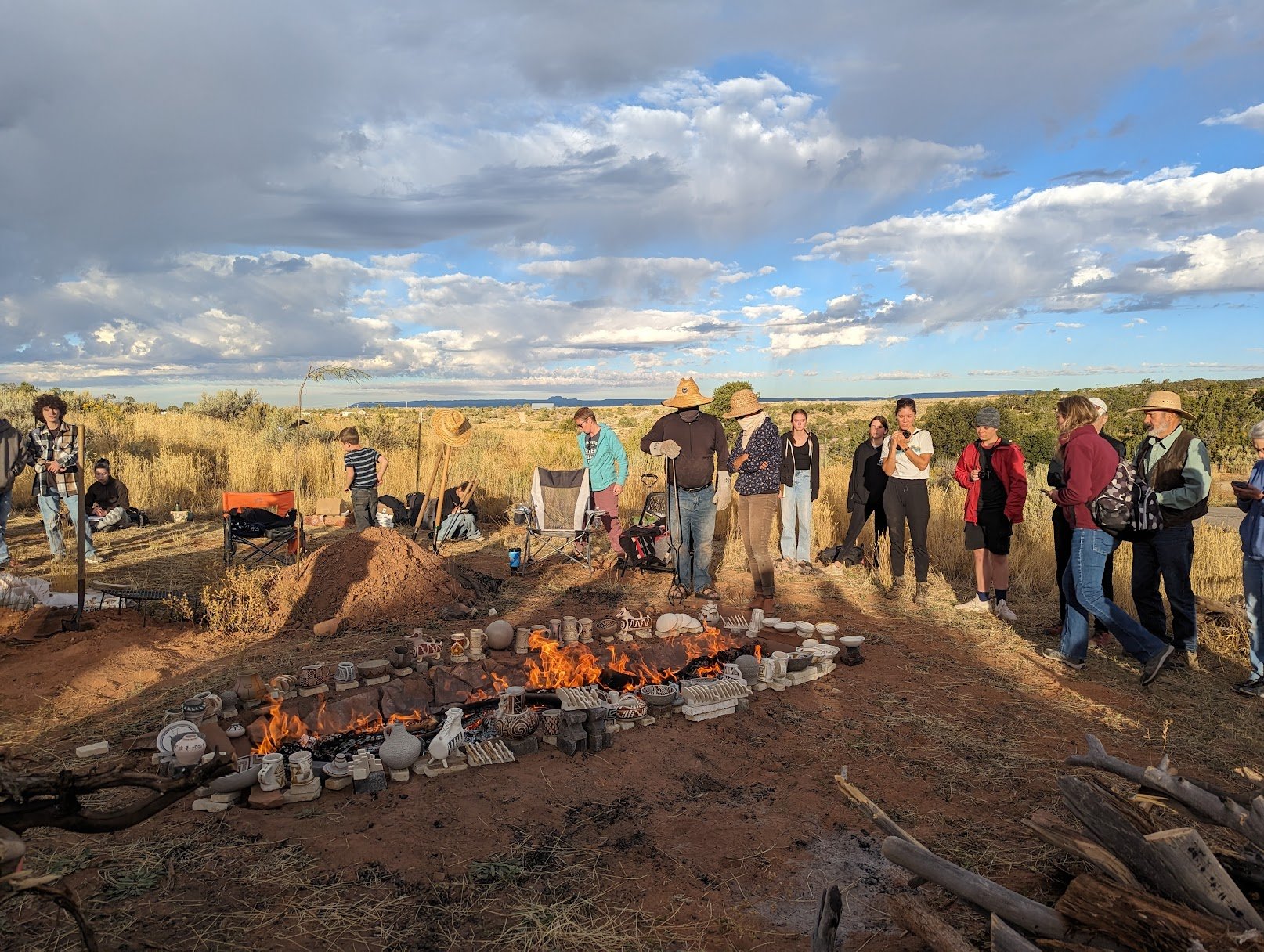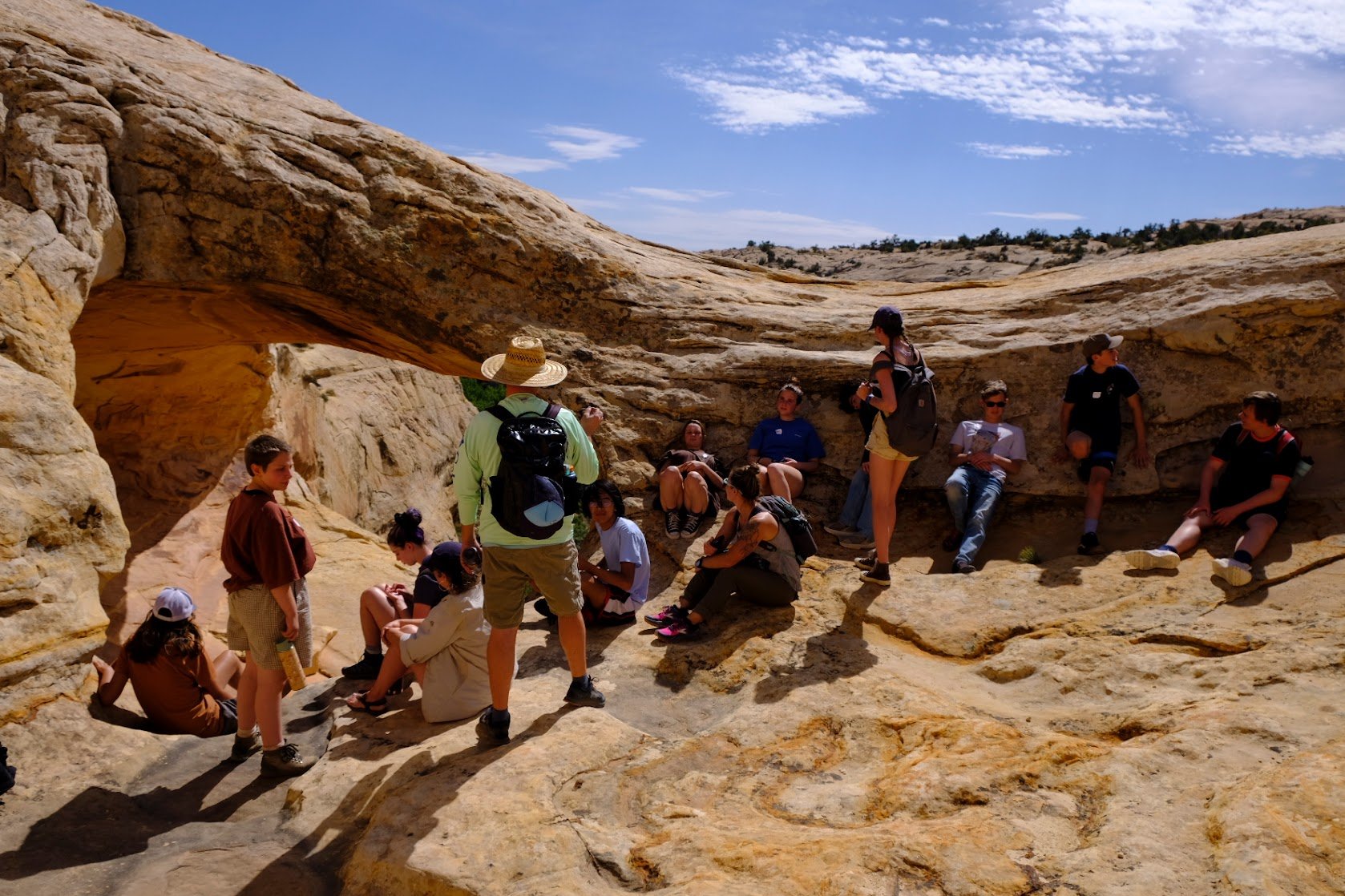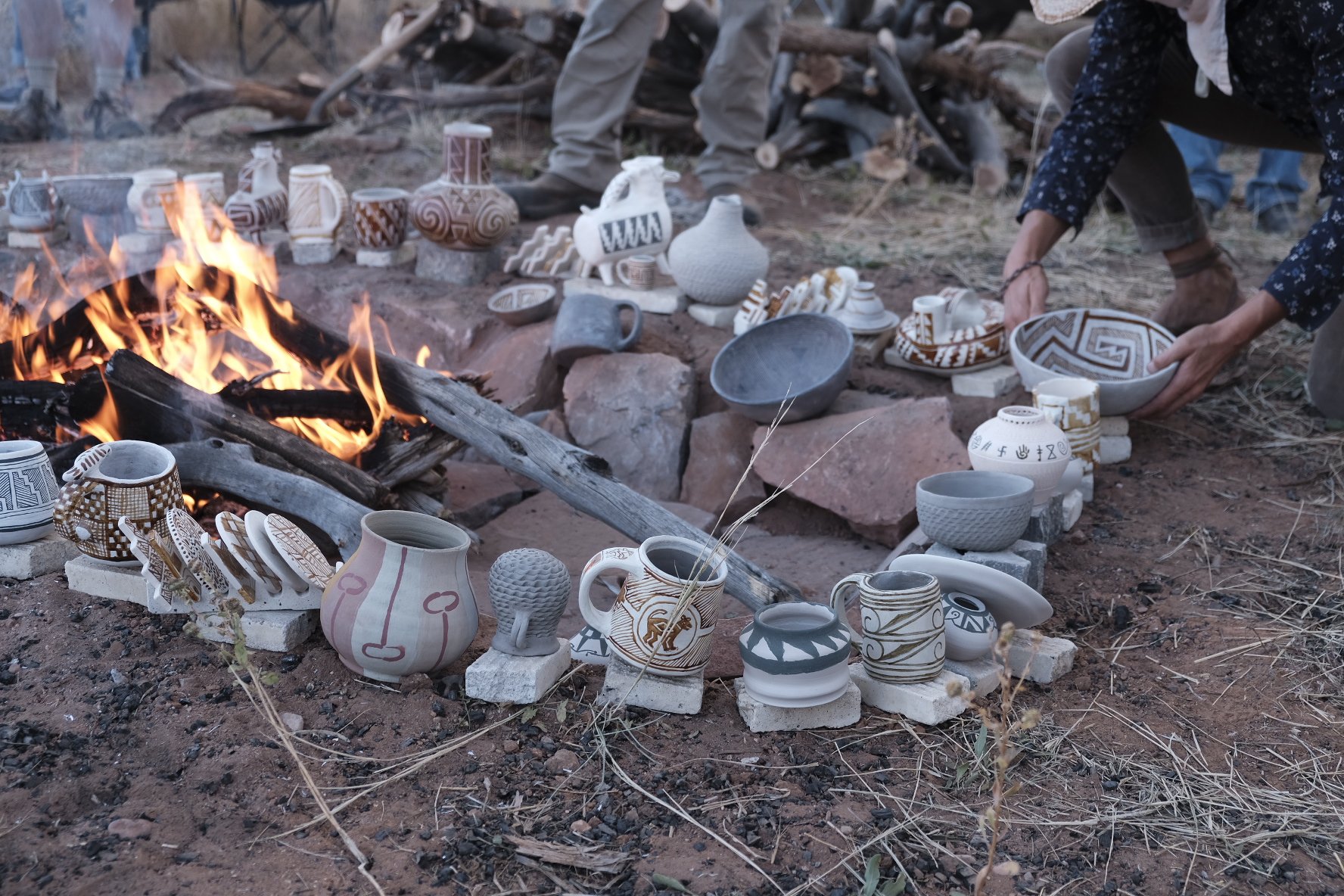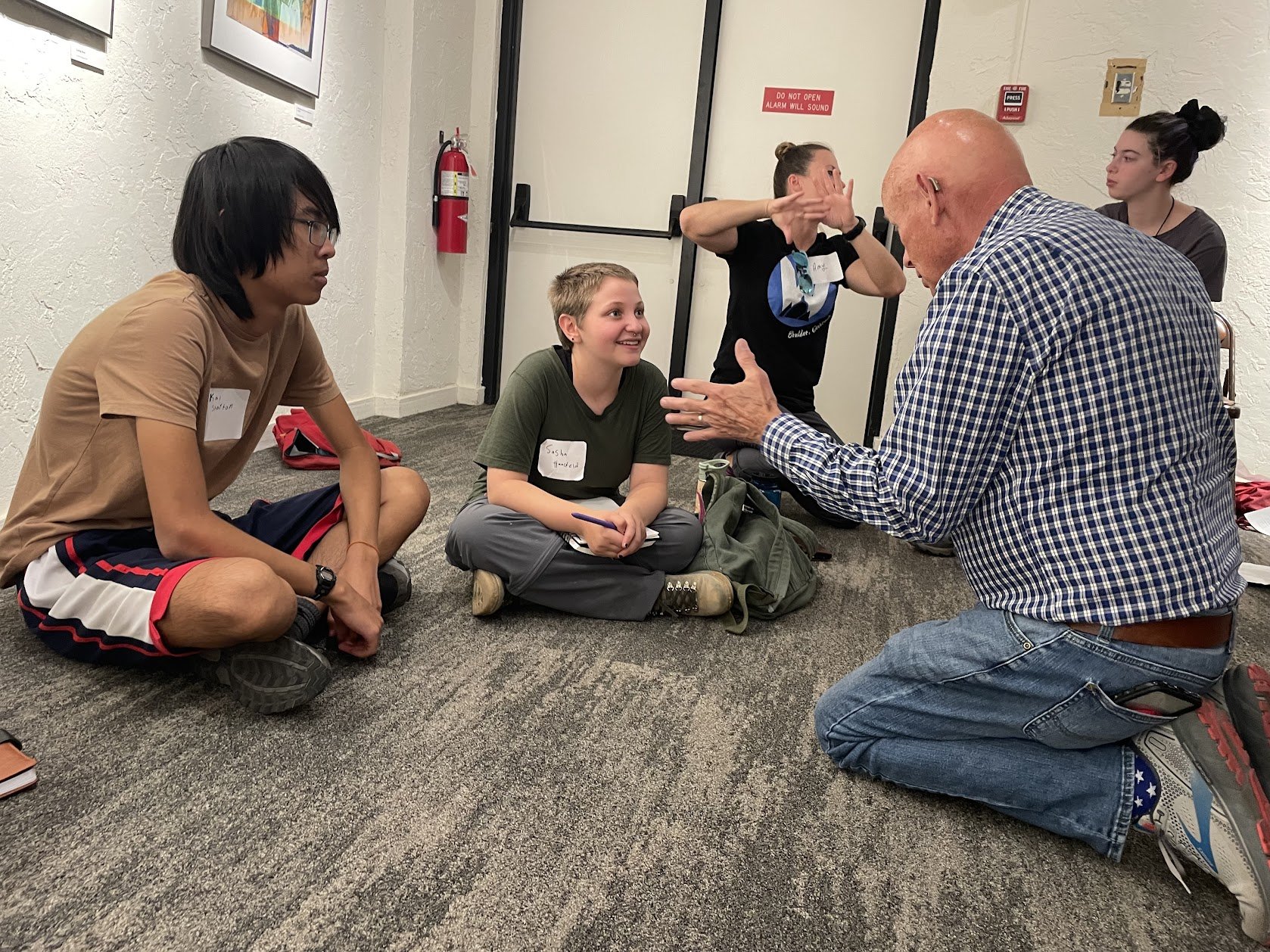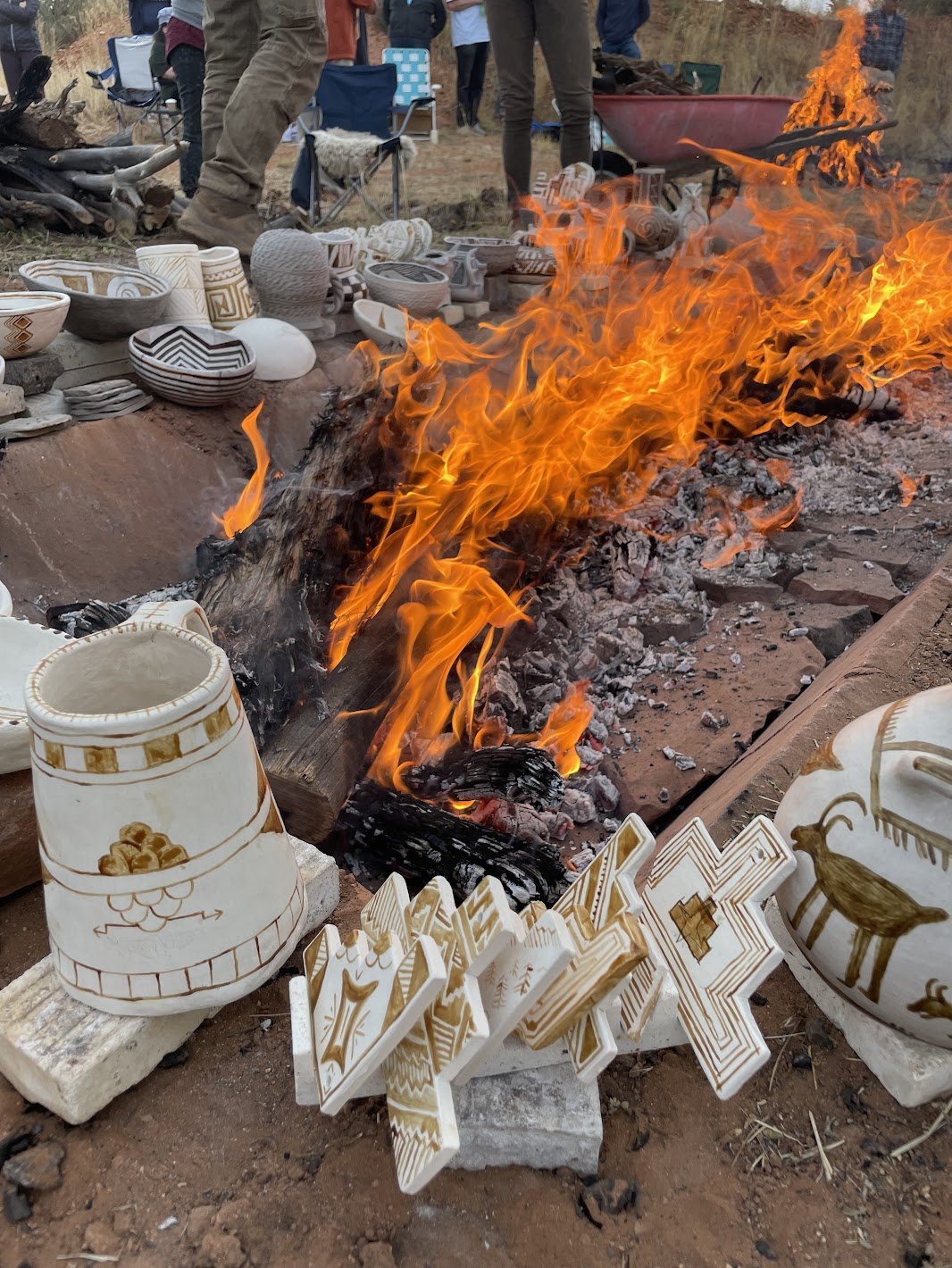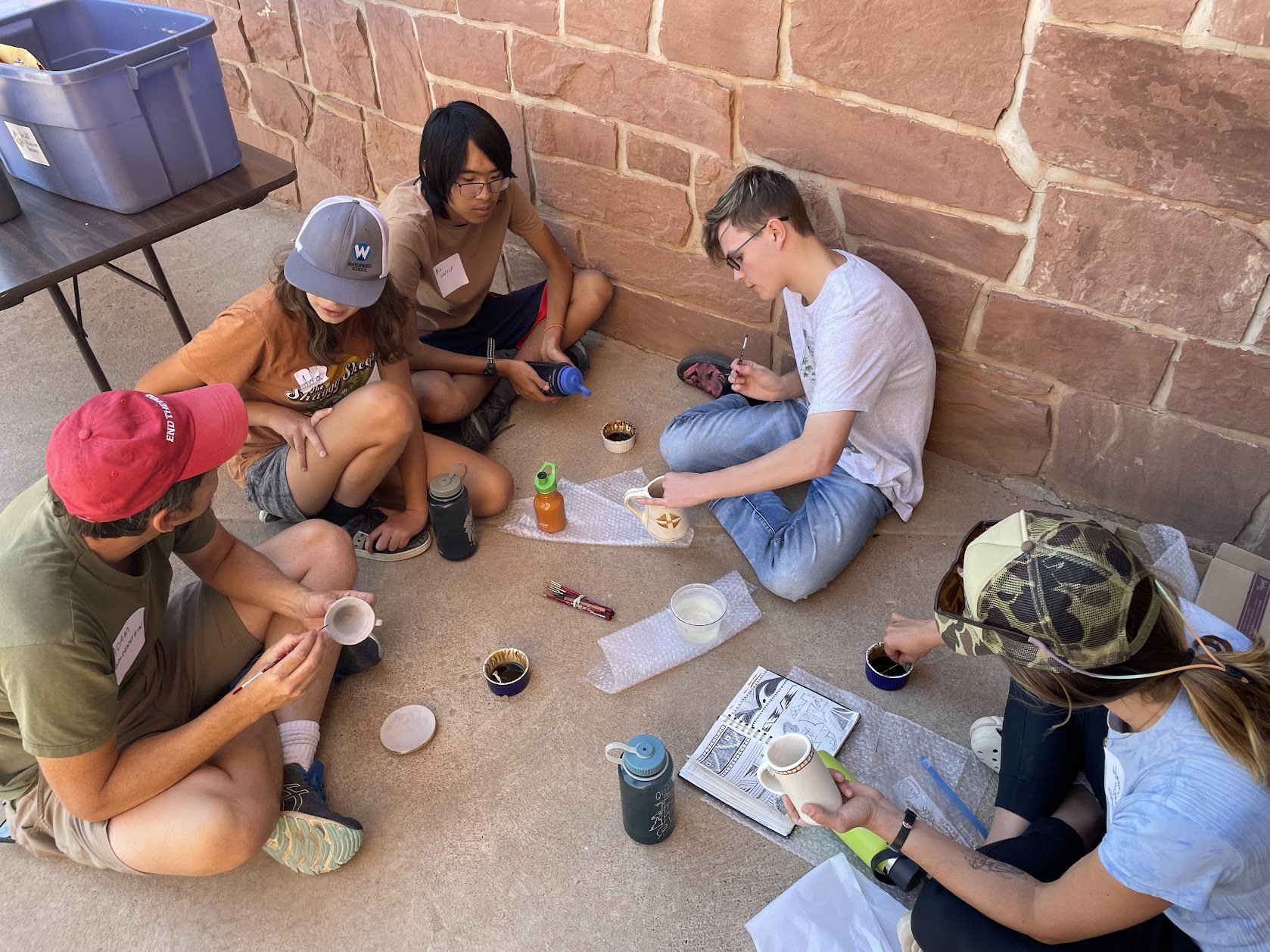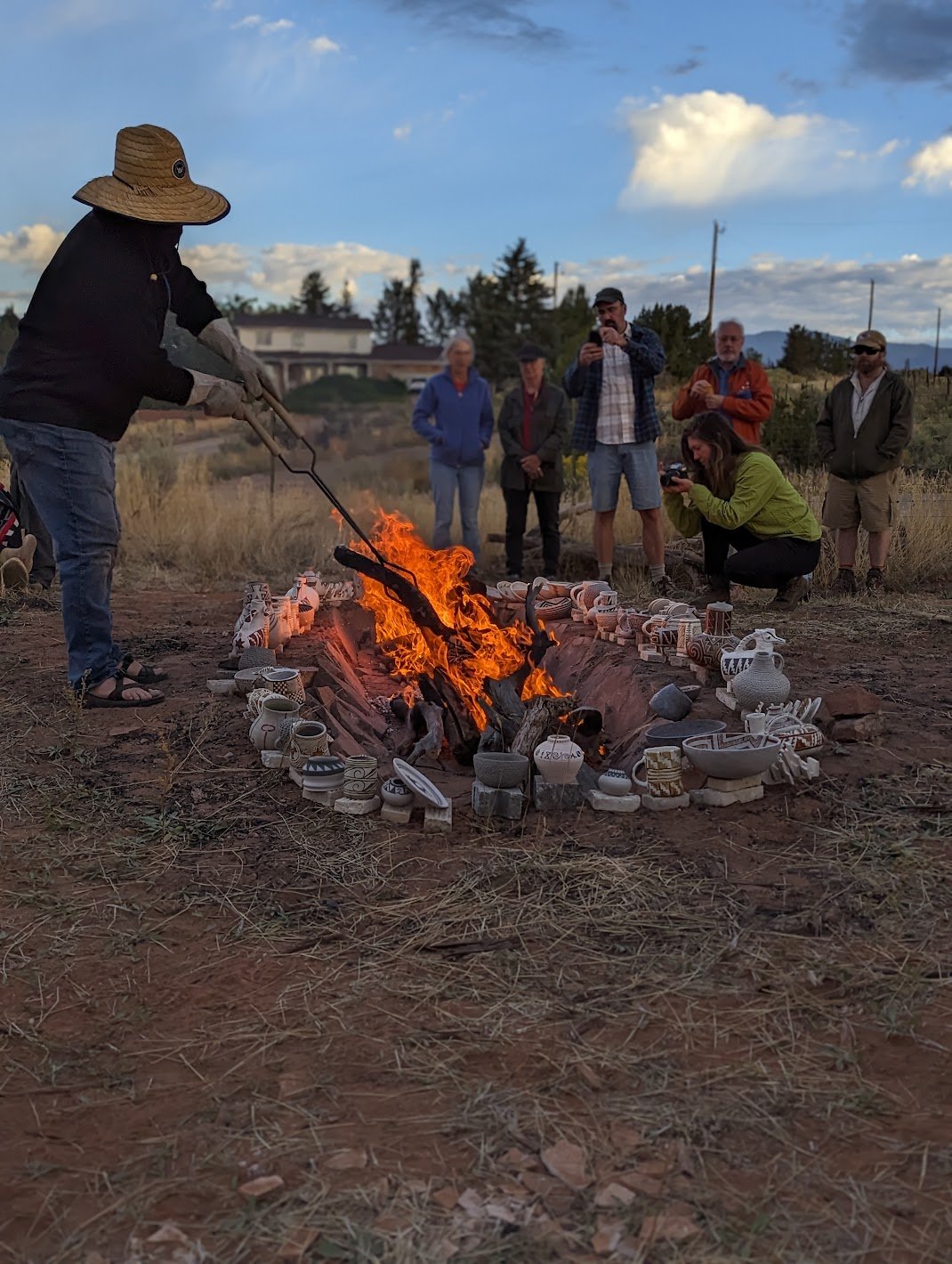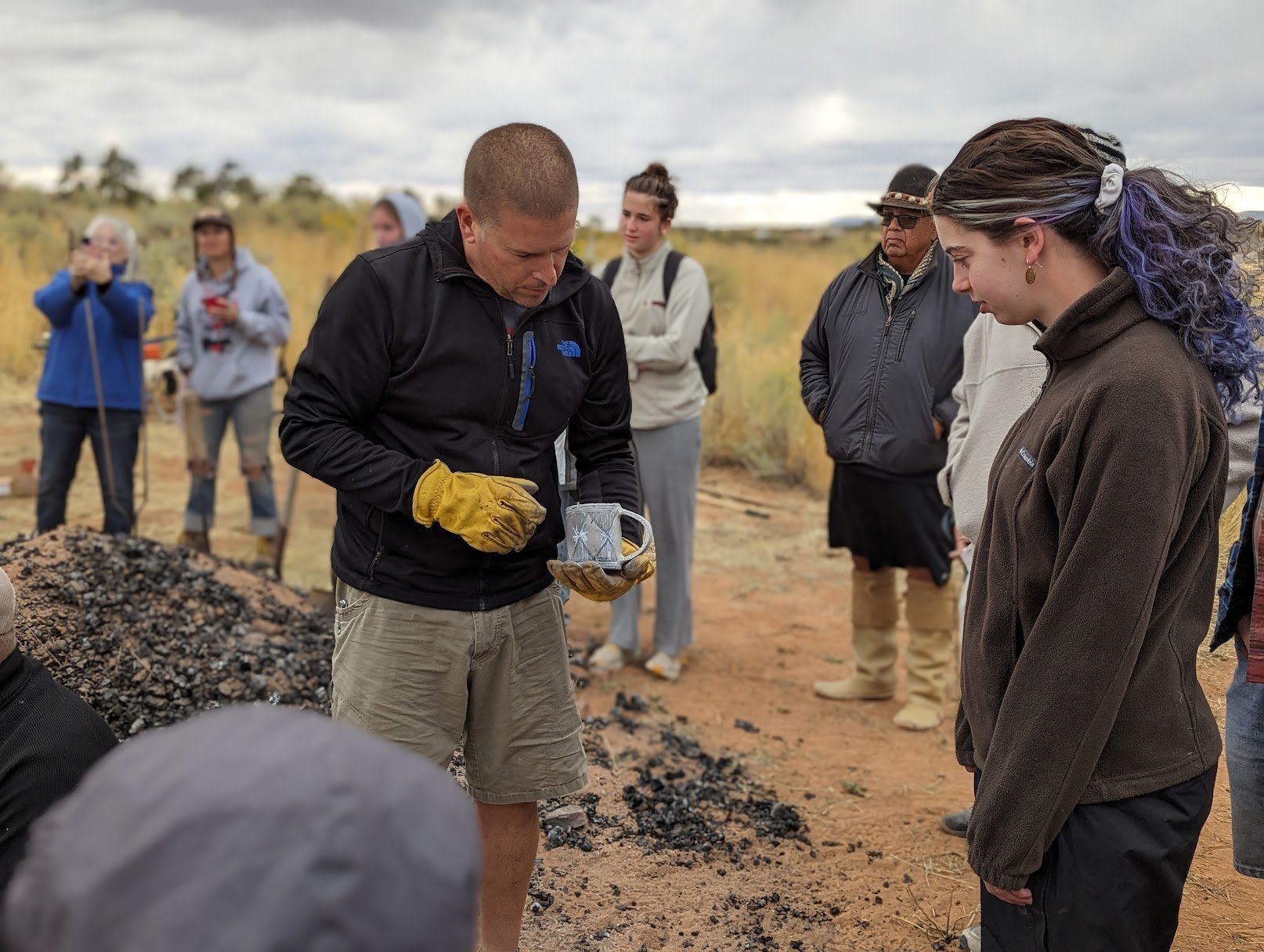Extended fieldwork for our high school Ceramics Through the Ages Course has, for the past three years, taken students to the Southwest Kiln Conference - an annual community gathering of people who share a passion for prehistoric pottery. This year (the conference’s twentieth anniversary), in Blanding, Utah, Watershed students immersed themselves in this ancient practice, learning from pottery replicators, archaeologists, and other experts in the field.
The essential question in this class, “What can art teach us about the past?” drove students to explore firsthand how pottery was a crucial component of ancient Puebloan life. Students were offered glimpses into the entire pottery-making process, from gathering raw earth material to participating in ancient trench-firing demonstrations.
Watching their personal pieces get fired before them, students were able to truly experience the delicate and risky nature of what it took for the Puebloans to create both functional and artistic pieces thousands of years ago. Kainin ‘26 remarked, “Through the kiln conference I learned how much work it takes for a pot to survive and the commitment it takes to see the process through. For example, firing a piece of pottery comes with a 50/50 chance of success. Either your pot is cracked or broken or maybe it comes out exactly how you wanted it. If one of our pieces broke, we could say, ‘Oh, well.’ For the Ancestral Puebloans, it could mean they couldn't transport water or store the latest harvest of seeds. They would have to gather more wood, make a new firing pit, and make an entirely new pot until one holds its shape. Going through this process makes me appreciate the work it takes to bring these pots to life.”
In typical Watershed fashion, this Skills course allows students to learn by doing - by putting their knowledge to real-life use. Marlowe ‘24, recognized anthropological information from the classroom reflected in pieces at the conference: “Addressing the question of what art can tell us about the past can depend on how the pottery looks. If a bowl is highly decorative, we can infer it was used for ceremonies or trading. If a pot is predominantly functional, we can often guess by its shape what the makers were using it for: cooking, collecting, or storing seeds or water.”
Through ceramic replication demonstrations, Macy ‘24 considered the experts’ work: “Replication allows for bonds to be created between replicators and potters from the past. Even though the replicators cannot directly communicate with any of these past potters, they can begin to understand the challenges and successes they faced through replicating their work. By using organic clay bodies, paints, and paintbrushes, replicators get a sense of what making pottery was like thousands of years ago.”
Longtime Watershed educator Jeff Osgood has loved bringing students to the gathering year after year: “The conference is a great blend of people who are just starting out (like our students) and longtime replicators who come to the conference as a kind of reunion to share ideas with each other while educating newcomers. These experts have been replicating ancient ceramics for a long time, blending their own styles with tradition.”
Jeff even took the authenticity of the experience to the next level by foraging for local Rocky Mountain Bee plants (in the Puebloan tradition) to create the rich brown paint (which turns black under firing) for the pottery. His enthusiasm for the art form is clearly shared by his students, many of whom walked away from the impressive trench firing with their own personally painted pieces as a symbol of the experience.
